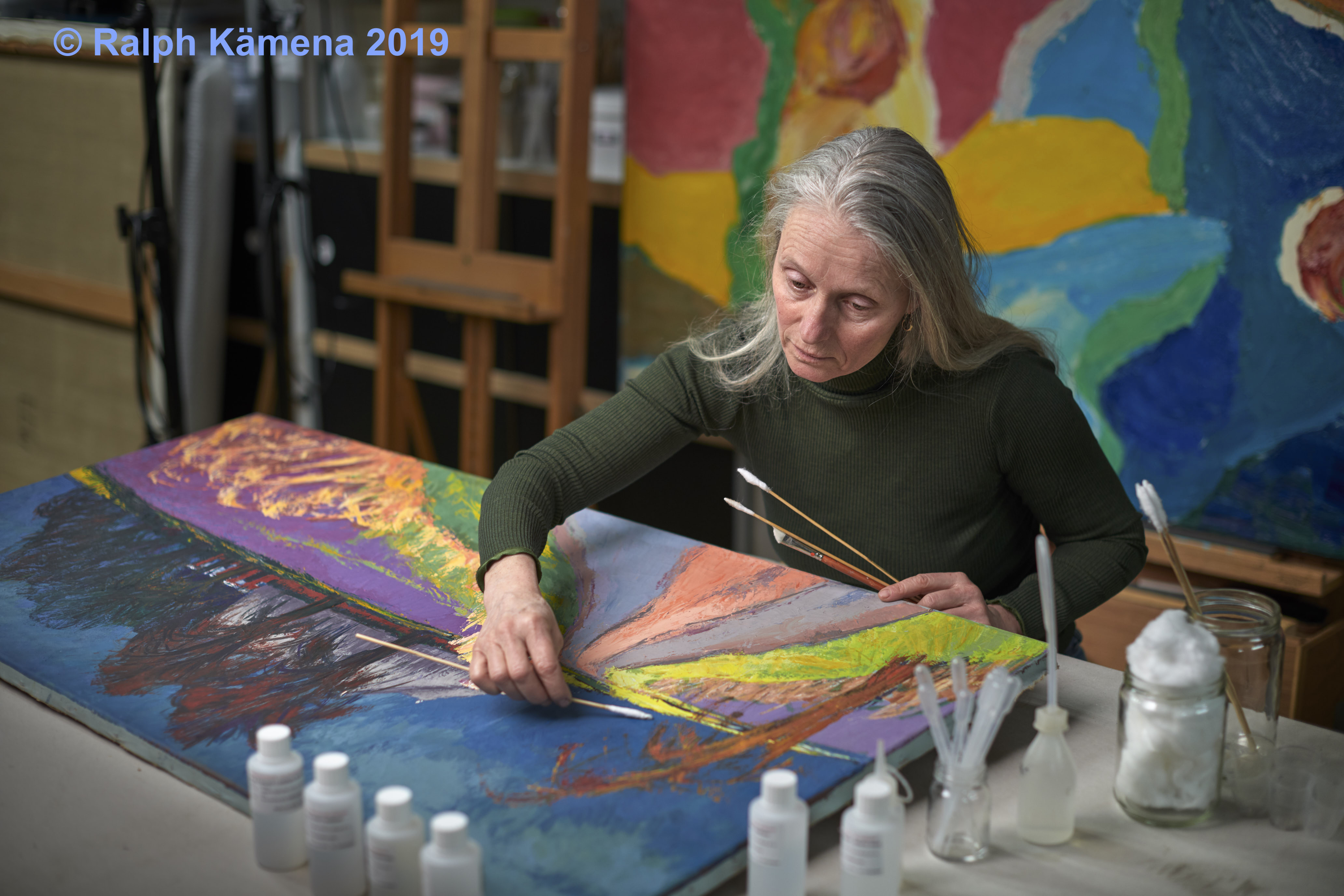tear mending
a large scale modern acrylic painting of 300 x 300 cm. The textile has a deformed weave, stretchen vessels, paint losses and pen on paint layer.
Tear mending methode: As the tear was close to the edge and stretcher bar, the cotton had to be removed form the stretcher. A mock-up was made with similar textile (cotton) and several consolidants were tested. Criteria for the right consolidant were: working method, visibility, flexibility and strength. Glue based on sturgeon glue and Jin Shofu glue was selected. It had the best properties according to the criteria.
Placing a milar, board and weights on the spot for several weeks, flattens the deformation in the canvas around the tear. As the textile is of cotton, moist would not be an option. A big cardboard role was made and the canvas was rolled around this face up. This way I could work on the tear from the front side. The broken and stretched cotton thread were impregnated with the sturgeon-Jin Shofu glue. The impregnation improves the strength of the broken fibres. The weave was reconstructed using pincers, needles and surgery instruments.
The broken canvas is re-joined using the glue and the hot needle. From the edges loose wires were taken and impregnated with the same glue. Pieces of 4 cm and 3 cm were cut and glued on the backside in between the wires of the textile to improve strength of the damaged area.
To complete the weave structure at the front side some toasted fibers (methyl cellulose) were added to compleet the tear mending.
see my blog for more pictures of tear mending: blog schilderij restauratie







